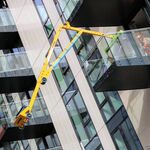Leo_Chan
Senior Member
I think there are 3 observations we can take away from rapid transit expansion in Vancouver and Montreal:
- Don't over build rapid transit, build only enough to sustain what is required (ie. Canada line and REM using light metro).
- Rapid transit should always go into or cross the core, where there is density to support ridership.
- Public/private partnerships do work, to ensure 1) and 2) are adhered to, because no one will invest money into money losing infrastructure for the sake of politics.
- I’d say the Canada Line is slightly underbuilt.
- Too bad Toronto is bordered in the south by Lake Ontario and downtown wasn’t at Yonge and Eglinton, otherwise lots of potential for new lines.
- Lease not sell ownership.




